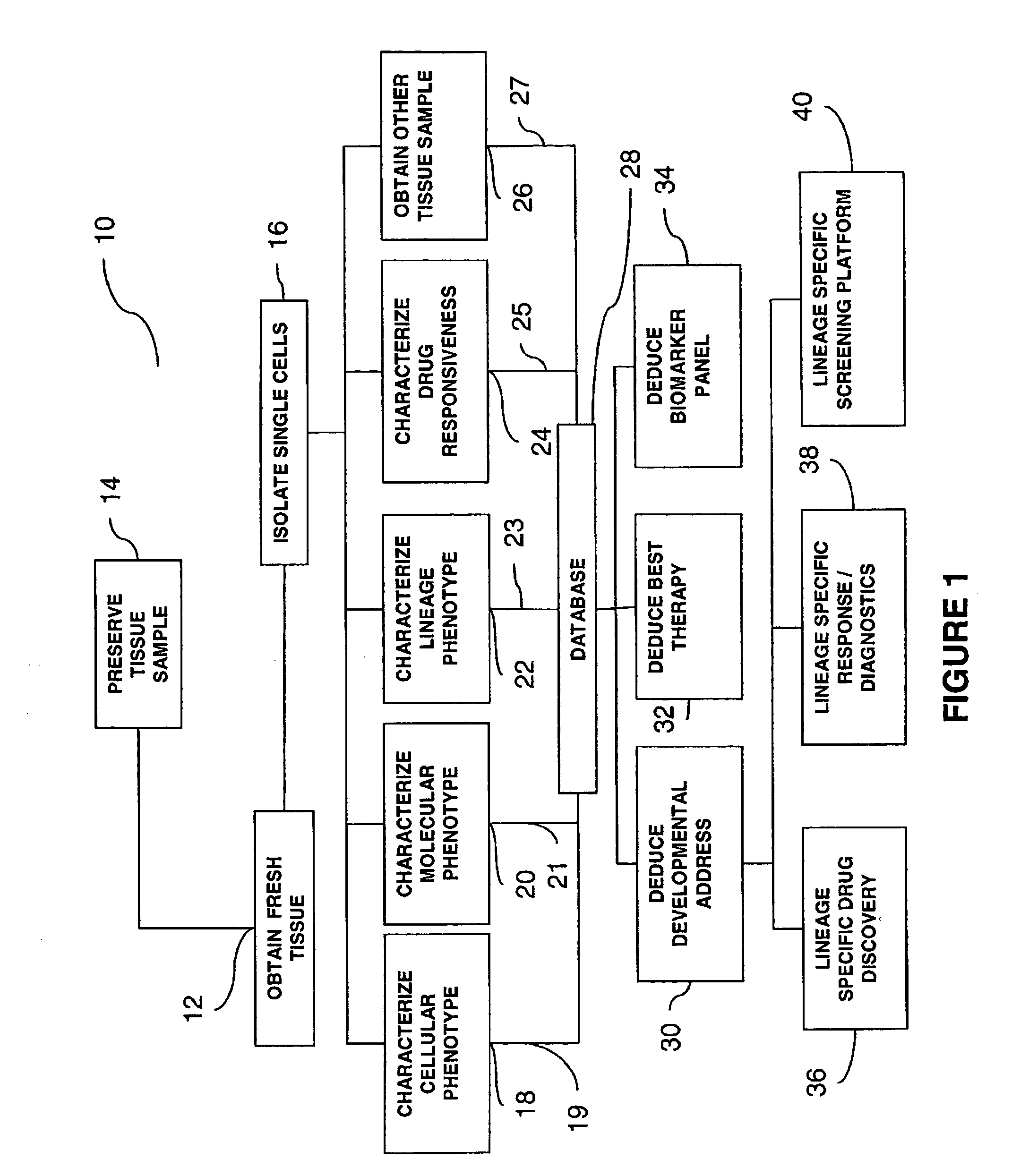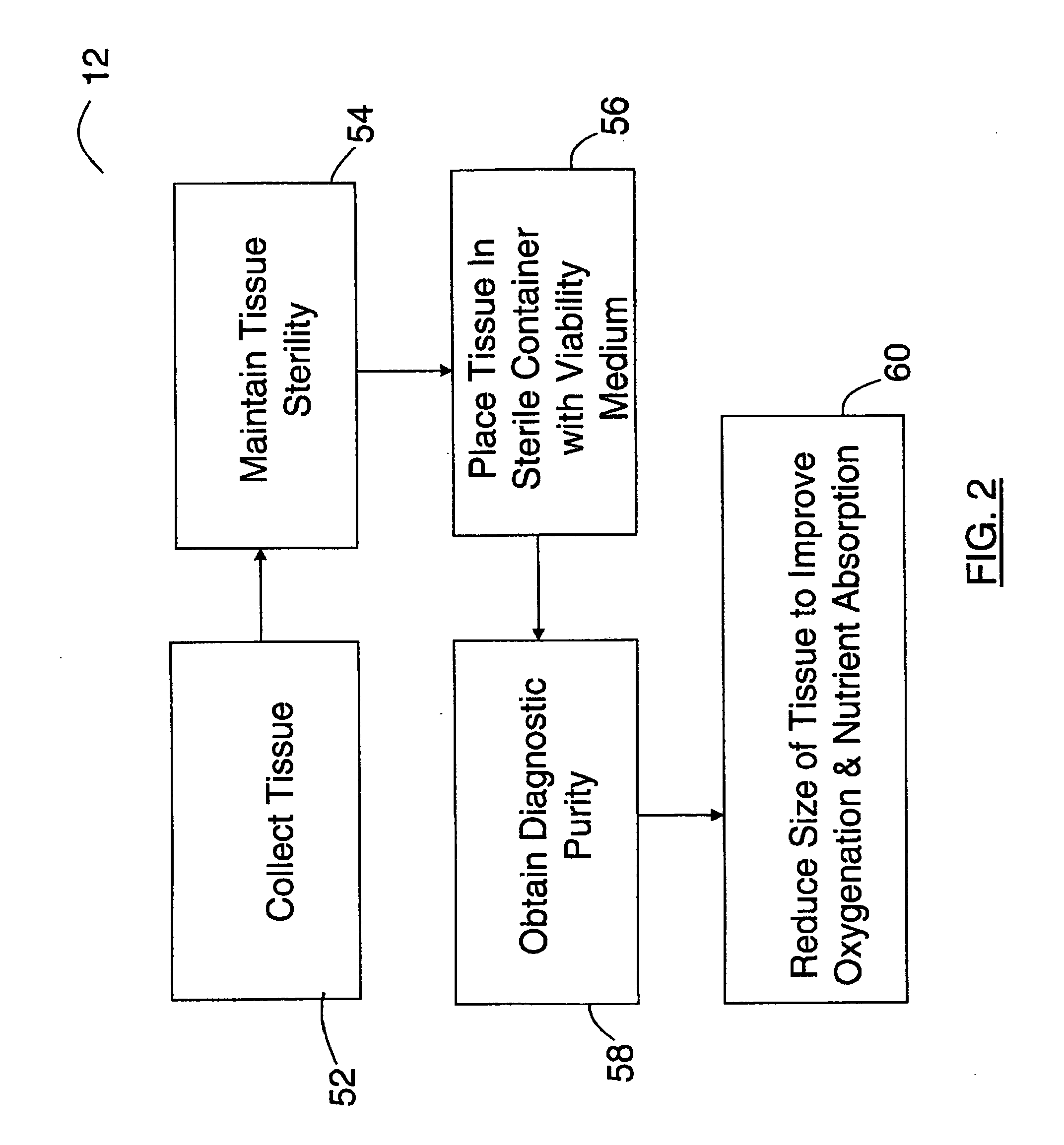Process for detecting the existence of mesenchymal chrondrosarcoma
a mesenchymal chrondrosarcoma and process technology, applied in the field of process for detecting the existence of mesenchymal chrondrosarcoma, can solve the problem that the prior art has not provided a relatively simple analytical technique for determining the presence of mesenchymal chrondrosarcoma
- Summary
- Abstract
- Description
- Claims
- Application Information
AI Technical Summary
Benefits of technology
Problems solved by technology
Method used
Image
Examples
Embodiment Construction
[0028]FIG. 1 is a flow diagram of one preferred process 10 of the invention. Referring to FIG. 1, and to the preferred embodiment depicted therein, in step 12 of such process, fresh tissue is obtained from a viable biological organism such, as, e.g., a human being. The tissue may be, e.g., tissue from a heart, lung, blood, liver, brain, hair, etc. The tissue may be normal tissue and / or abnormal tissue. As the term is used in this specification, the term tissue refers to an aggregate of cells and intercellular material that forms a definite structure in which the cells are generally of similar structure and function.
[0029] In one embodiment, the tissue is tissue from a malignant tumor. As is known to those skilled in the art, the term malignant is descriptive of tumor that metastasizes and endangers the life of an organism.
[0030] In another embodiment, the tissue is tissue that is not malignant but is otherwise abnormal. Thus, the tissue may be tissue infected with a virus or bacte...
PUM
| Property | Measurement | Unit |
|---|---|---|
| molecular weight | aaaaa | aaaaa |
| concentration | aaaaa | aaaaa |
| concentration | aaaaa | aaaaa |
Abstract
Description
Claims
Application Information
 Login to View More
Login to View More - R&D
- Intellectual Property
- Life Sciences
- Materials
- Tech Scout
- Unparalleled Data Quality
- Higher Quality Content
- 60% Fewer Hallucinations
Browse by: Latest US Patents, China's latest patents, Technical Efficacy Thesaurus, Application Domain, Technology Topic, Popular Technical Reports.
© 2025 PatSnap. All rights reserved.Legal|Privacy policy|Modern Slavery Act Transparency Statement|Sitemap|About US| Contact US: help@patsnap.com



